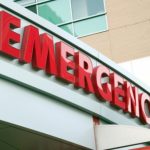 It’s a frightening notion to think of your family in danger because of poor emergency planning. But with so many different scenarios that could happen, the thought of staying prepared for all of them can be daunting. What if a catastrophic event occurs? What about a natural disaster or major medical trauma?
It’s a frightening notion to think of your family in danger because of poor emergency planning. But with so many different scenarios that could happen, the thought of staying prepared for all of them can be daunting. What if a catastrophic event occurs? What about a natural disaster or major medical trauma?
It doesn’t need to be as scary as it sounds. With some planning, you and your family could be safe and sound in the event of any emergency :
Tip #1
It is important to keep enough supplies in your home to meet the needs of you and your family for at least three days. An emergency supply kit should include: water, food, first aid supplies, and any special items that will be needed for infants, elderly, the sick or people with disabilities. Keep these items in an easy to carry container such as a covered trash container, a large backpack, or an overnight bag.
Tip #2
- Take a minute to check your family’s first aid kit, and note any depleted items. There should be two kits, one in your car and one in your home. The following is a list of items that every first aid kit should have.
-adhesive bandages, various sizes
-5″ x 9″ sterile dressing
-conforming roller gauze bandage
-triangular bandages
-3 x 3 sterile gauze pads
-4 x 4 sterile gauze pads
-roll 3″ cohesive bandage
-germicidal hand wipes or waterless alcohol-based hand sanitizer
-antiseptic wipes
-pair large medical grade non-latex gloves
-adhesive tape, 2″ width
-anti-bacterial ointment
-cold pack
-CPR breathing barrier, such as a face shield
-aspirin or non-aspirin pain reliever
-anti-diarrhea medication
-antacid (for stomach upset)
-syrup of Ipecac (use to induce vomiting if advised by the Poison Control Center)
-activated charcoal (use if advised by the Poison Control Center)
Tip #3
Preparing for emergencies won’t be expensive if you think ahead and buy small quantities at a time. Make a list of some foods that:
-have a long shelf-life and will not spoil (non-perishable).
-do not require cooking.
-can be stored easily.
-have a low salt content (salty foods will make you thirsty).
Examples of the foods that should be in your kit include, dried fruits and vegetables, chocolate and trail mix or granola bars. Food supplies should be bought in quantities to sustain each member of your family for at least three days following an emergency.
Tip #4
There should be a 3 day supply of clean drinking water for each person. Store a minimum of one gallon of water per person per day (two quarts for drinking, two quarts for food preparation and sanitation). Make sure that you store water in plastic containers. An active person needs to drink at least two quarts of water each day. Hot environments and strenuous activity can double that amount. Children, nursing mothers, and people who are sick will also need more.
Tip #5
When water is of questionable purity, it is easiest to use bottled water for drinking and cooking if it is available. When it isn’t available, it is important to learn how to treat contaminated water. In addition to having a bad odor and taste, water from questionable sources may be contaminated by a variety of microorganisms, including, bacteria and parasites that cause diseases such as dysentery, cholera, typhoid, and hepatitis. All water of uncertain purity should be treated using the following 2 step method:
1)Filter : Filter the water using a piece of cloth or coffee filter to remove solid particles.
2)Boil : Bring it to a rolling boil for about one full minute. Cool it and pour it back and forth between two clean containers to improve its taste before drinking it.
Your family is worth a few extra minutes of planning. With the proper game plan in place, you can keep your family safe in the event of any emergency!
Related Reading: Why climate change affects more than the environment
Advertisement
